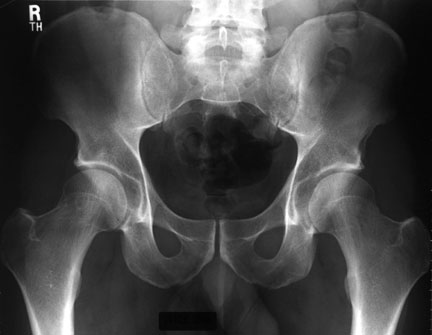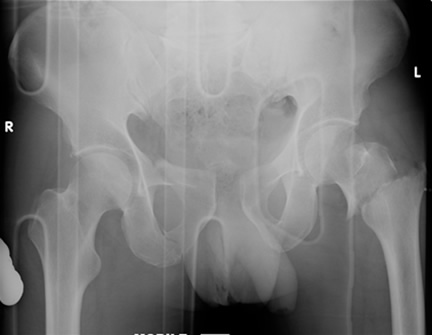History of
- major trauma producing unstable fractures
- moderate trauma producing stable fractures
Examination may reveal
- swelling or bruising
- blood at the urethral meatus
- tenderness localised to specific areas, (most of the pelvis is palpable)
- painful springing, - unequal leg length, - distended bladder
Radiology may reveal
Unstable fracture
(i.e. pelvic ring is disrupted in two or more places)
- e.g. fractured pelvic rami and diastasis of sacroiliac joint or fracture of all 4 pubic rami
- Beware damage to underlying viscera
- In case of bladder do not encourage to pass urine or catheter
- Check distal neurovascular
- IVI and X-match 6 units
- Refer ortho and urology if appropriate
Stable injury
(i.e. pelvic ring is disrupted in one area)
- fractures of 1 or 2 pubic rami or other fractures e.g. wing of ilium, acetabulum
- Assess mobility
- Bed-rest and analgesia at home or in hospital according to pain, age and social circumstances


Immediate management
- Get help from your emergency medicine senior
- Check ABCs (assume other significant injuries until excluded) (particularly chest injuries)
- Stabilise pelvis with sling or sheet (try to reduce haemorrhage)
- At least two large bore IV cannulae with confirmed cross-match request
- Trauma CT (when safe)
- Treat as major trauma case with trauma team activation where available
Fat embolism
Please beware pelvic and long bone fractures may triger fat emboli. Classically a triad of:
- desaturation
- cutaneous petechiae
- confusion
May also have "meningism" and ↑↑BP (cerebral hypoperfusion response).
Treatment is supportive.